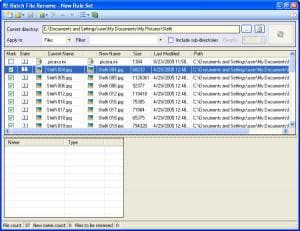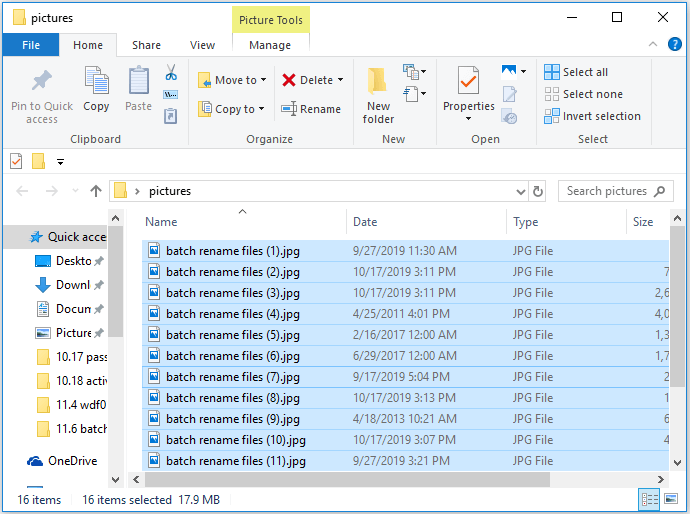

Press OK in the warning dialog to confirm you wish to rename the files. The two PowerShell commands needed for batch file renaming are dir (which is an alias for get-childitem) and rename-item. All the currently visible files in the working directory should be highlighted in blue, with a preview of the new file names appearing in green under the New Name column:Īssuming you are happy with the New Name results, press the large Rename button in the lower right.
BATCH FILE RENAME WINDOWS 10 FREE
01 Rename Master Free Rename Master is a freeware utility designed to rename multiple files with just a few clicks. Let’s take a look at each option and how it works. Once you do this, any folders in the directory will no longer be displayed in the main file window:įrom the main menu bar, select Actions → Select All (or press Ctrl + A). Add in third-party renaming utilities, and the possibilities are endless. Towards the bottom left, find the option marked Filters (12) and uncheck the Folders checkbox item: In middle-right portion of the Bulk Rename Utility window, look for the option marked Add (7) and type a - in the Prefix field: You can either type a direct path (after which, you would press Enter) or you can use the folder tree in the upper left to navigate your through your folders: E.g.: adioderrropp12.txt ghffjjk56.txt oprsdrotwrr12ee. These file names contain a lot of underscores as well. Open the program and navigate to the folder containing your files. windows batch script for renaming files Ask Question Asked 5 years, 11 months ago Modified 5 years, 1 month ago Viewed 14k times 0 I have a lot of files in a windows folder.
BATCH FILE RENAME WINDOWS 10 INSTALL
just for this one task) or cannot install software, there is a portable "No Installer" version as well. If you only need to use it temporarily (e.g. If you wish to give it a try, please follow these steps:ĭownload and install Bulk Rename Utility. It's free for personal, non-commercial use and while its interface may look slightly daunting, it's relatively easy to use in most cases. Or you can choose the first file, press and hold the Shift key, and then click the last file to select a group. Instead, I might suggest using a program called Bulk Rename Utility. You can press and hold the Ctrl key and then click each file to rename. Unfortunately, I am not sure there is a simple way to do this from File Explorer itself. In the resulting window use the following statement: ls | Rename-Item -NewName


Hold Shift and right-click in open space in the Explorer window where you can see your files and select " Open PowerShell window here":


 0 kommentar(er)
0 kommentar(er)
